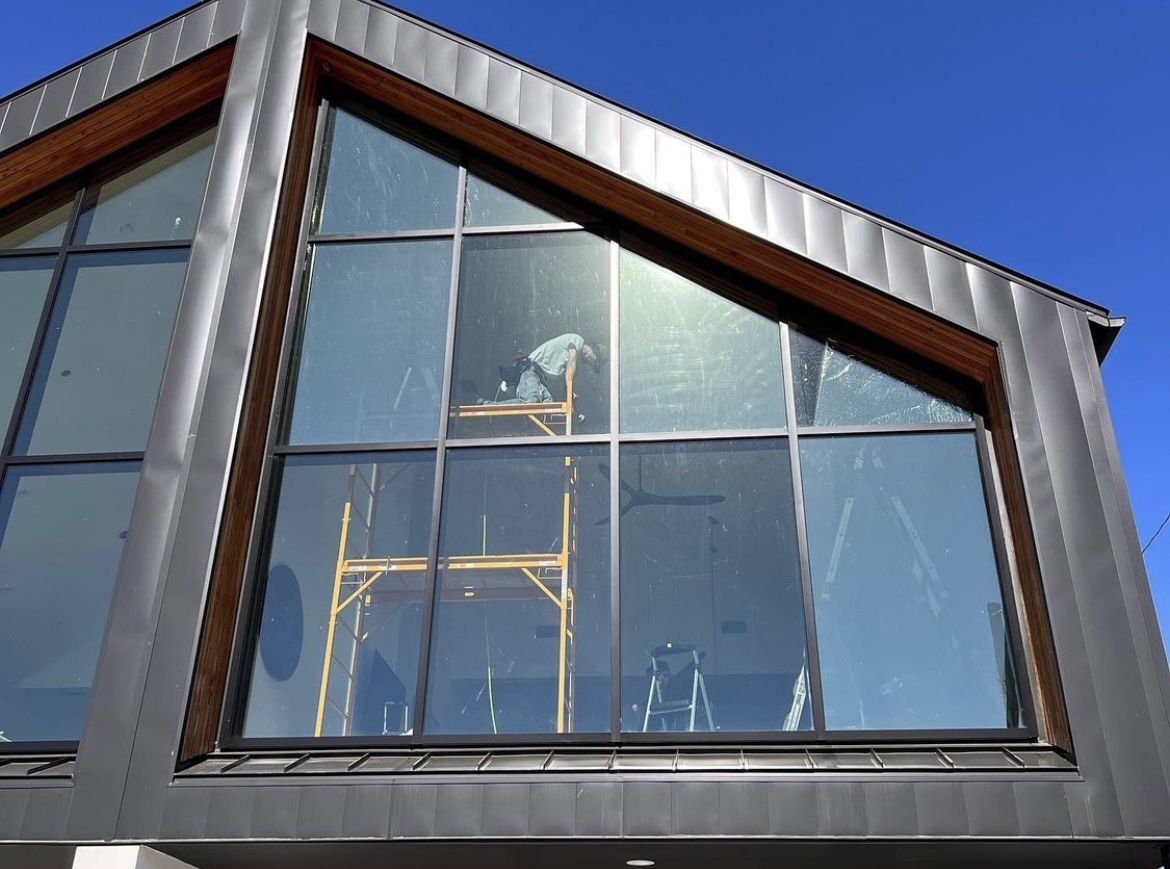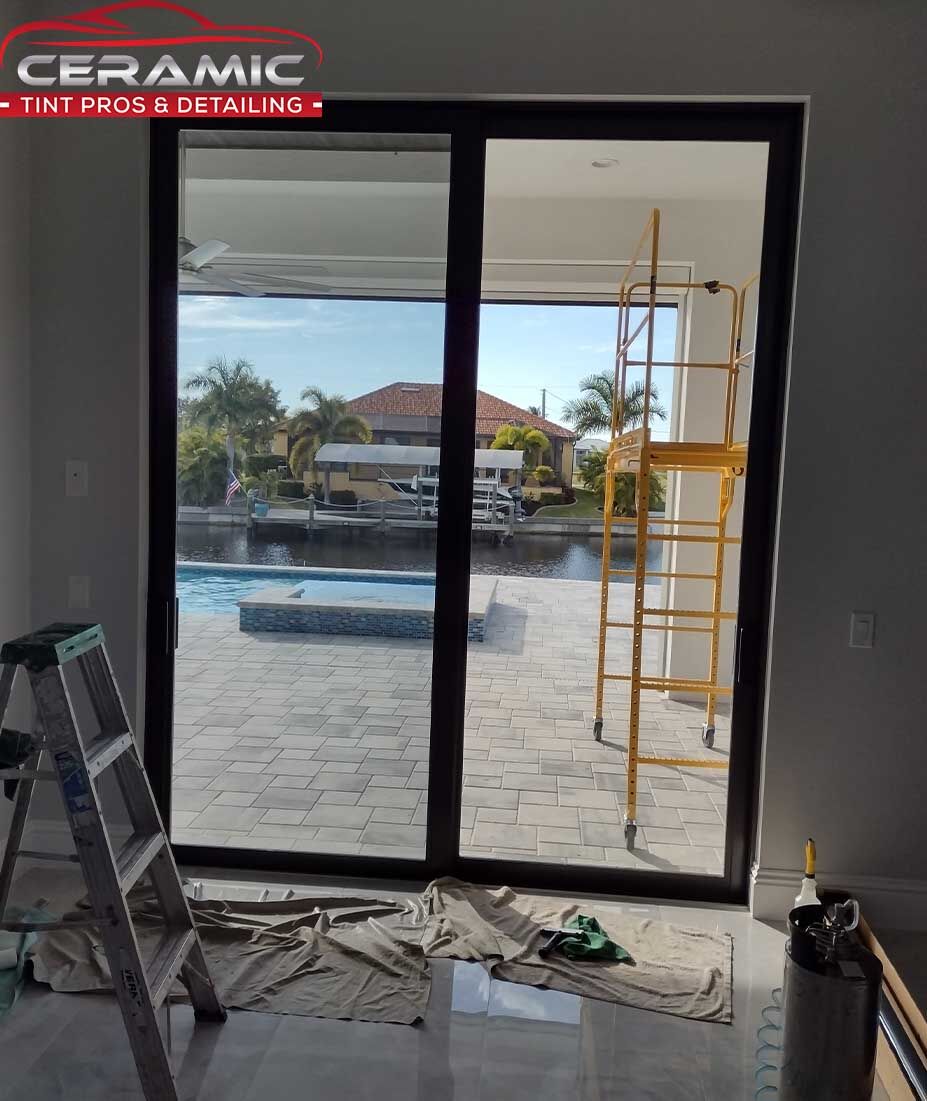Why Residential Window Tint is a Smart Investment for Homeowners
Why Residential Window Tint is a Smart Investment for Homeowners
Blog Article
Exactly How Residential Window Tinting Boosts Your Home's Power Performance
Residential window tinting provides a compelling option for home owners seeking to boost energy efficiency within their space. By applying specialized movies to windows, it properly lowers warm transfer, thus maintaining interior temperatures and reducing the demand for extreme home heating or cooling. This not just curtails power intake however also provides a much more comfortable environment by mitigating glare. Recognizing the nuances of exactly how tinting jobs and choosing the ideal kind for your home can be essential. Curiously, what elements should one think about before making this financial investment?
Recognizing Home Window Tinting
Recognizing window tinting is vital for home owners seeking to improve both comfort and power effectiveness in their home. Residential Window Tint. Window tinting involves the application of a thin film to the inside or outside surface area of glass home windows. This movie can substantially modulate the quantity of sunlight and heat that goes into a home, thus influencing interior climate conditions
There are numerous sorts of home window tinting movies available, each with unique residential properties. As an example, dyed films take in solar energy, while reflective movies disperse it far from the glass surface. Ceramic films provide a balance of visibility and warmth rejection, making them a preferred choice amongst property owners. The efficiency of home window tinting is commonly determined by its Visible Light Transmission (VLT) percentage, which shows just how much light can pass with the movie.
Benefits of Power Effectiveness
Home window tinting not just boosts aesthetics but likewise plays a substantial duty in enhancing power efficiency within domestic areas. By minimizing warm transfer with home windows, colored movies produce an extra steady indoor climate, which can cause considerable decreases in energy usage for heating & cooling. This energy performance converts right into reduced energy bills, offering property owners with substantial long-term savings.

Furthermore, window tinting enhances the comfort of living areas. By minimizing glow and blocking harmful UV rays, tinted windows produce an even more pleasurable atmosphere, which can cause boosted wellness for passengers. The security versus UV rays likewise aids maintain furniture and floor covering from fading, adding to the long life of family things.
Just How Tinting Works
Tinting films run through a mix of sophisticated materials and innovations made to control the quantity of solar power entering a home. Largely made up of polyester, these films frequently incorporate ceramic or metal particles that mirror and absorb heat. This twin ability permits them to significantly minimize the infiltration of ultraviolet (UV) rays and infrared radiation while permitting noticeable light to travel through.
The performance of window tinting is determined by its solar warm gain coefficient (SHGC), which shows just how much solar energy is sent through the window. Lower SHGC worths are preferable as they signify better warm rejection. In addition, home window colors can include a range of tones, permitting house owners to personalize their visual choices while boosting power performance.
Furthermore, these movies act as an obstacle, preventing warm loss during colder look these up months by reflecting indoor heat back into the home. This thermal insulation effect enhances the cooling advantages acquired during warmer months, adding to a well balanced indoor environment year-round. By managing solar power properly, residential window tinting not only improves comfort yet likewise plays an essential duty in minimizing energy intake and reducing utility costs.
Choosing the Right Color

There are different types of window films readily available, consisting of colored, metalized, and ceramic. Ceramic films offer superb warm control without endangering visibility and are highly resilient, making them a preferred choice.
Noticeable light transmission (VLT) is an additional vital element, as it indicates the quantity of all-natural light that can travel through the colored glass. House owners should pick a color with a VLT that matches their lights choices while still giving appropriate glow decrease.
In addition, evaluating the solar heat gain coefficient (SHGC) can aid image source determine exactly how well a tint can block warm from sunshine. A reduced SHGC shows much better heat control, ultimately improving power effectiveness.
Setup and Upkeep Tips
Appropriate installment and upkeep are crucial parts in maximizing the advantages of residential home window tinting. Experts also make use of specialized tools and strategies, which can improve the durability and performance of the tint.
Adhering to setup, maintenance is important to lengthen the life of the window film. It is suggested to wait at least thirty day before cleaning up the colored home windows to enable the sticky to treat completely. When cleaning, make use of a soft cloth and a mild, ammonia-free cleaner to stay clear of damaging the film. Prevent rough products that can damage the surface.
Furthermore, regular examinations are useful. Look for any peeling or bubbling, which can indicate incorrect installment or use with time - Residential Window Tint. Addressing these issues immediately can protect against further damage and keep power efficiency. By adhering to these installment and upkeep suggestions, home owners can guarantee their window tinting remains to provide substantial energy savings and comfort for several years ahead.
Verdict
To conclude, domestic window tinting works as an effective option for improving energy efficiency within homes. By decreasing warm transfer and blocking harmful UV rays, my review here window movies add to reduce power consumption and boosted indoor convenience. The choice of proper tinting materials, in addition to proper installment and maintenance, better optimizes these advantages. Inevitably, window tinting stands for a sustainable financial investment that not only lowers utility expenses however additionally promotes a comfy living setting throughout the year.
Home window tinting includes the application of a thin movie to the inside or exterior surface area of glass windows. By lowering warmth transfer via windows, colored movies develop a much more stable indoor climate, which can lead to significant decreases in power intake for home heating and air conditioning.The effectiveness of window tinting is measured by its solar warmth gain coefficient (SHGC), which suggests how much solar energy is transferred with the window. By taking care of solar energy properly, household home window tinting not just improves comfort however also plays an important role in minimizing power usage and reducing utility bills.
By minimizing warmth transfer and blocking hazardous UV rays, home window movies add to decrease power usage and enhanced indoor convenience.
Report this page